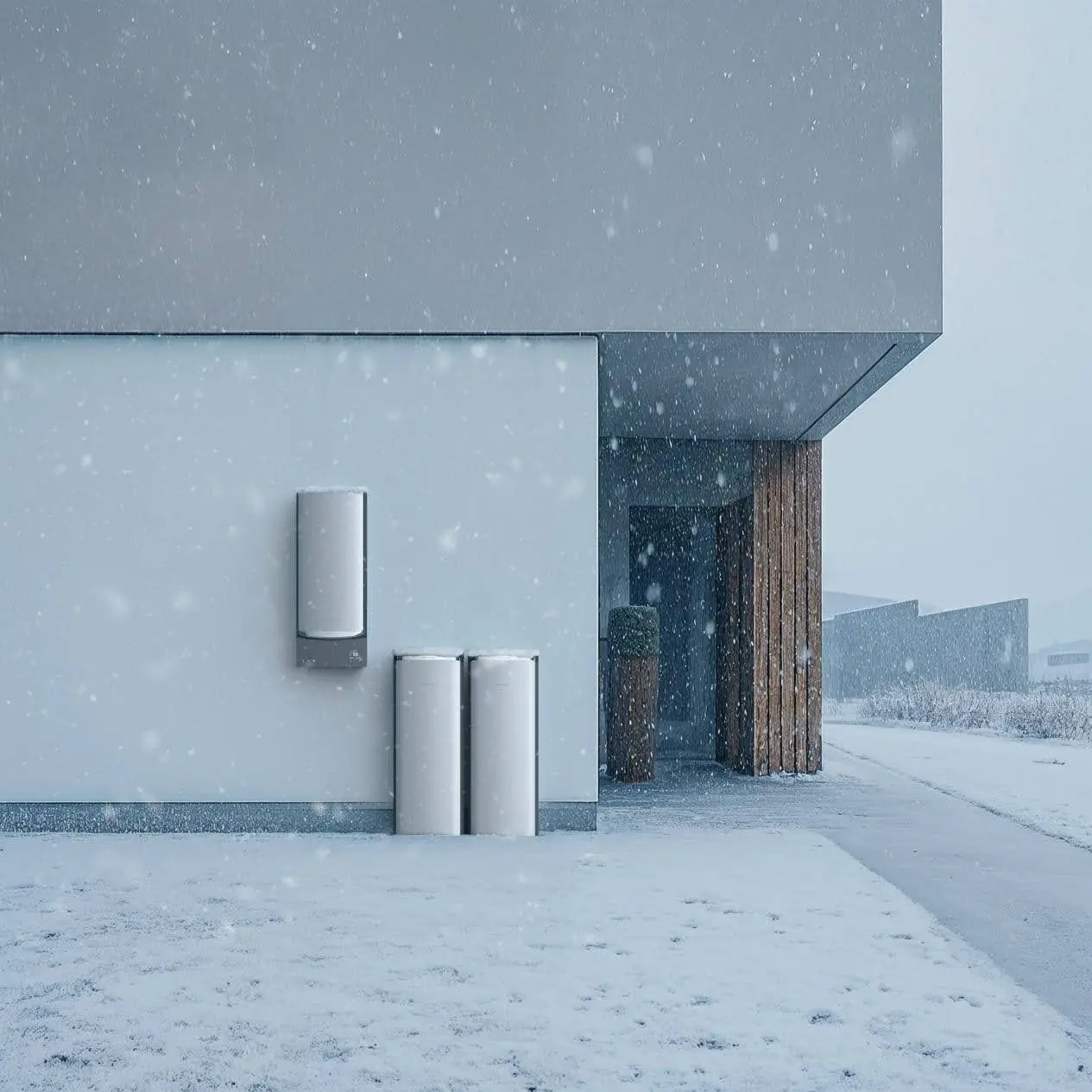As weather becomes more and more volatile across America, with power outages increasing 64% over the last decade, millions of households continue to be exposed. Although conventional backup generators are prevalent, they are fraught with drawbacks – ranging from maintenance issues and fuel storage to noise pollution and carbon emissions. Enter home battery systems, a game-changer that’s changing the way we think about backup power and energy security. As the U.S. faced more than 180 major power outages in 2023 alone, the need for dependable backup power options has never been greater. But are home batteries really an ideal solution to powering through when the grid goes dark? Homeowners should think twice before writing a large check to make sure they truly need that amount of energy, are aware of the best of the leading edge technology, and how such systems are tied to solar systems, whether or not installed today or tomorrow. Read on for the three important elements to consider to see if your home is well-placed to benefit from a home battery system.
Understanding Home Battery Systems and How They Work
Home battery systems are an advanced form of energy storage and management — your own personal power bank for your entire house. At the heart of these systems are batteries that are built for energy use and all in one intelligent inverters and smart control equipment that can be controlled easily. The batteries hold electrical energy hooked up to the grid during off-peak hours or from solar panels, using advanced lithium-ion technology similar to what propels electric cars. When you need power, the inverter of your system generates AC power from the DC power stored in your system. Modern systems like the EcoFlow use either AC coupling, which the battery system connects to your home’s electrical panel separately, or DC coupling, to more efficiently combine with solar panels. When you aren’t actively using these systems, they track your residential energy consumption in real time, using stored energy in your batteries in combination with grid power to help you get the most out of your energy. In the event of a blackout, the system’s automatic transfer switch responds within seconds and provides power to your home’s essential services and elements.
Why Home Batteries Excel for Whole-Home Backup Power
Today’s home battery systems have completely changed the game in home backup power providing unmatched security and ease of use. And unlike the standby natural generators, you don’t have to remember to fill them up. Our systems come on automatically within milliseconds of a power failure, so your house is up and running with hardly a blip. A smooth and instant switch-over is all the more important to protect sensitive electronic devices and the continuity of vital systems such as medical equipment, security systems and smart home devices. Silent operation – With home batteries, you never have to listen to the constant hum and buzz of a generator that can be irritating to both you and your neighbors. Their zero emissions operation secures environmental sustenance and enables safe even indoor set-ups – no exhausted air means no need for canopies or fixed installations. The pairing with smart home technology allows advanced energy management that homeowners can track and schedule via mobile apps and automatic settings. This smart control goes above and beyond just a backup system, providing daily energy optimization that reduces grid dependence and changes to your home’s energy needs. Furthermore, some of these systems can be programmed to preferentially power select circuits at the time of an outage, which provides uninterrupted power to essential circuits, and supports less critical loads for extended runtime.
Step-by-Step Guide to Home Battery Installation
Pre-Installation Assessment
An effective home battery installation process starts with an energy audit, that will uncover your home’s power requirements. This includes a review of 12 months of utility bills in order to determine periods of usage and peak demand. HVAC contractors will perform a thorough load calculation — which includes determining the power usage of key appliances and systems. They’ll assess the electrical panel capacity of your home, how much space is available on walls and ventilation needs. The site evaluation also involves examination of local building codes, HOA restrictions, and interconnection requirements for utilities. This comprehensive assessment helps ensure that the system is sized and located optimally, as well as identifying if any electrical system upgrades are needed.
System Design and Equipment Selection
Battery selection is about trading-off capacity, power, and life. Energy density and cycle life of current lithium-ion batteries are better than lead-acid types. Factors to be taken into account by system designers include continuous power demand, starting surge demand on motored appliances, and the period of desired electrical autonomy. Choice of inverter should be based on the current requirements as well as maximum system expansion especially in the case of solar integration. Smart energy management, control and safety are part of the design which makes this a future proof solution that can respond to changing energy requirements.
Installation Process and Activation
The average timeline to install is 4-6 weeks, including permitting and utility approval. Your professional installers start by taking care of all the permitting and inspection arrangements. The AC installation consists of placing the battery system inside in a temperature controlled space, installing the smart electrical panel, and connecting the power monitoring devices. Safety measures such as emergency disconnects and surge protection are built in. Technological and system analysis Once the electrical connections are made, technicians carry out rigorous testing to ensure operation and safety. Training, verification and system commissioning: During the last operation the installers adjust the energy management settings, verify the communication systems and offer full training on the operation and monitoring of the installation. System data sensibilities, settings, and alerts are features homeowners must become familiar with through friendly mobile apps.
Building Scalable Energy Independence
New home battery systems are designed to be scalable, to evolve with your energy consumption. The system is modular, so homeowners can purchase the basic system and expand capacity by purchasing battery modules without replacing the core components. This flexibility is especially helpful when incorporating solar panels, since the battery system can be scaled to keep up with the growing solar production. Smart load management technology ensures the power sensing module prioritizes power distribution to critical circuits, which calls upon stored energy as needed, and avoids waste during normal utility supplied operation. The advanced grid interaction capability enables it to dynamically adjust to changing energy markets and deliver high value across the full life of each battery. Homeowners can use a layered plan for protecting their circuits, and assign different priority levels for home systems in case of power outages. Essential medical equipment and refrigeration are at the top of the list; climate control comes next, with non-essentials like convenience appliances being last. This strategic methodology provides the most optimized use of stored energy to carry on with life in critical moments of power down-time. As energy wants and needs continue to change, the system’s software can be updated to accommodate new usage styles and emerging smart home technology, and remain relevant for a long time period.
Comparing Backup Power Solutions
Home Battery Systems vs. Generators
Old school generators and home battery systems are 2 entirely different solutions to the need for backup power. Generators require ongoing fuel supply, maintenance, and storage (with volatile fuels that pose a safety hazard), but home batteries are maintenance free and don’t need any refueling. Fuel and maintenance costs of generators can add up over time; while batteries typically will have initial costs with little recurring. Generators can be as loud as 60-70 decibels (the same noise as a vacuum cleaner), and home batteries provide completely silent frequency regulation. Generators also lend themselves to outside installation with adequate ventilation, which limits their installation options. A detailed cost analysis shows that, while generators have lower short-term costs, the long-term costs of fuel, maintenance and possible repair are in many cases higher than that of a battery system.
Battery Systems vs. Portable Power Stations
Although portable power stations provide flexibility, they can’t quite compete with the universally encompassing nature of whole-home battery systems. These kinds of portable devices can only power a couple of critical appliances through regular power outlets, while home batteries connect directly to your breaker box to power entire electrical circuits. With the home batteries permanently installed on site, homeowners never have to deal with plugging in dozens of extension cords and moving equipment around every day. While a portable station could be okay for camping, or occasional outages, they do not have the level of load management and automatic transfer switching that whole-home systems provide. Home batteries can also accommodate the surge needs of some large appliances, such as air conditioners and well pumps, that can surpass what portable stations can do.
Cost Analysis and Incentives for Home Battery Systems
Though the up-front cost of a home battery system is high—between $15,000 and $30,000 for a full installation—financial incentives can offset the cost for much less money out of your pocket. The federal Investment Tax Credit (ITC) currently provides a 30% reduction of total system costs when batteries are installed with a solar or other renewable energy system. Many states also provide other incentives, such as California’s Self-Generation Incentive Program (SGIP), that subsidizes small scale storage solutions with up to $200 per kilowatt hour of storage capacity. Local utilities frequently offer rebates and engage in demand response programs, which provide revenue for battery owners over time. Return on investment should factor in monthly utility bill savings from peak rate arbitrage, earnings on grid services were they available, and the worth of not having an outage. By and large paybacks are 5-8 years, depending on local electricity rates and how it’s used. With financial flexibility that includes solar loans, advantageous rates on HELOC and manufacturer-backed programs, these systems are affordable with little upfront investment. Property Assessed Clean Energy (PACE) financing enables homeowners to pay for an installation through property-tax assessments that stretch the payments out over many years.
The Future of Home Energy Independence
Home battery solutions have become a game-changer for home backup power, providing unmatched reliability and flexibility compared to traditional sources of power. Simple integration into the existing electrical network, quiet operation, and zero emissions, make it the perfect solution for a modern homeowner looking for energy independence. The modular design of these systems offers the flexibility of scale in order to grow with changing energy requirements, and coupled with smart technology integration, guarantees maximum system performance and efficiency. As protection against more frequent power failures or a way to help curb your dependence on the grid, home batteries make you the master of your own energy destiny. But their ability to work with solar installations, help in grid services, and qualify for sizable financial incentives, makes it a good option for long-term management of power. When researching at-home backup options, talk to authorized installers to determine what will fit your lifestyle and your energy goals. The key to energy independence is in knowing what and how much power you will need and starting to act today for power where the incentive is now.






